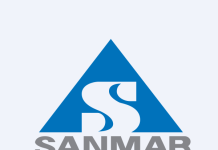After creating waves in the gaming and entertainment industry, Virtual Reality (VR) is poised to make inroads into many businesses. Our columnist explores how VR can benefit the Chemical Industry in areas of education, research, plant design and construction and operator training. The power of VR lies in boosting our powers of visualisation and imagination coupled with new interfaces to move things around. Will Chemical Industry shed its traditional conservatism and embrace this cutting-edge technology?
Next month Winter Olympics will be staged in Pyeongchang, South Korea and many of the exciting events like Alpine Skiing, Figure Skating, Ice Hockey etc will be broadcast around the world in Virtual Reality (VR), providing an immersive experience for millions of viewers. And when that happens VR would have arrived big time on the center stage of the world. Older readers would remember the days when people listened to cricket commentary, not even on radios owned by them but in-store displays. Grandmothers fueled our imagination by narrating folktales and epics, which then assumed a new shape as we read those accounts in comics and storybooks. The imagination got further altered and intensified as we watched those stories being enacted, first in 2D and then 3D. VR is expected to refine this experience even further. The power of VR lies in its ability to provide an order of magnitude boost to our visualisation and imagination. This can be harnessed not just for entertainment, but also education, research, training, design, construction, operation and maintenance. In the coming decade no industry is expected to be untouched by VR. VR is predicted to grow into a trillion-dollar industry by 2035.
Origins
VR is not such a new idea; it has been around for six decades. The father of VR is Morton Heilig, an American cinematographer, who in 1957 built the Sensorama Simulator, a machine that allowed you to virtually ride a bike while experiencing the sounds, vibrations, wind and even smells of the road. Probably too ahead of its time, it was a spectacular flop. The content of VR is created using CGI (Computer Generated Images) or by capturing images using a cluster of cameras to provide 360-degrees point of view. In the playback mode, sensors in the headset track the user’s head movements and alter the view accordingly. Optimal VR experience requires high resolution screens, and powerful processors so that images move in-sync with the user’s head providing a seamless experience. It is only recently that screen and processor technology have improved so much in both performance and price that VR is becoming commercially affordable.
Education
It is quite easy to foresee the benefits of VR in chemistry and chemical engineering education, where the students can get a deeper understanding of molecular structures, reaction mechanisms and other molecular-level phenomena. The earliest known application of VR in chemical engineering education was Vicher, a VR based simulator developed at University of Michigan in 1995. Vicher was used as an aid to teach Chemical Reaction Engineering to undergraduates. Students were able to travel through pipes and enter inside the reactor to observe the reaction. The objective of the model was to get a better appreciation of the reaction mechanisms both outside and inside the catalyst. It is remarkable that John Bell and Scott Fogler were able to build such a VR model way back in 1995 from “primitive” hardware, compared to what is available today. VR transforms learning into an enjoyable experience as students feel empowered and have control over the learning process. VR is advantageous for learning the abstract concepts of chemistry and chemical engineering, particularly for spatially-challenged students as it does away with the traditional language-based instruction, that would often commence with “imagine you are on….”
Research
Perhaps the most mind-bending application of VR is in discovering new molecules. Scientists at Novartis, for example, are using VR headsets to immerse themselves in a protein and walk around, with a view to understand how drugs interact with proteins in our body. By this way, they hope to alter the molecular structure of a drug and thus improve its efficacy in arresting a disease. VR has great potential to speed up the discovery of new drugs.
Plant Design and Construction
Forty years ago, the only tools for plant design were paper, pencil and tons of imagination. Then came the plastic model in 1980s. They improved visualisation considerably, but were cumbersome to construct and handle. The plastic models usually ended up as displays in the reception area to be showcased to VIP visitors. Computer Aided Design (CAD) generated 3D models are now the mainstay of plant engineering. While the 3D models facilitate collaborative efforts in plant design, the workflow gets mired in multiple time-consuming reviews for operability, accessibility, constructability and safety. Reviews are performed on computer monitors or projected screens and the comments generated during these reviews are usually captured on paper and then painstakingly incorporated into the model. The iterative process of create – review – recreate – review takes time and effort. This is where VR would make a world of difference. It has the potential to reduce the cycle time by boosting collaborative effort and an entirely different human-model interface. The alterations could be done in real-time through hand gestures and eye movements. The reduction in engineering efforts and time would be very significant.
Such collaborative visualisations can be extended to the construction phase, usually the most difficult and complex phase of the project. Supervisors equipped with VR headsets can track the progress of construction in real-time.
Operator Training
While building new plants, many chemical companies invest in Operator Training Simulator to prepare their personnel for plant operation. This simulator only addresses the control room staff. Adding VR environment to such a simulator will not only raise the training experience to a new level but also expand it to include the field operators who are in the “firing line”. With human failing responsible for over 90% of industrial accidents, improved and regular operator training on a VR platform will minimise catastrophic incidents. Stressful conditions associated with an emergency like fire or explosion can be simulated realistically and operators’ response can be measured. This will improve the preparedness to deal with disasters.
Final Thoughts
VR is now a very mature technology. In the Gartner Hype Cycle (referred to in previous editions of this column), VR is on the Plateau of Productivity and is marching ahead for widespread commercial adoption. VR is poised to grow and thrive in a culture that is becoming increasingly comfortable with processing images and less adept at handling text. Many businesses are likely to gain significant competitive advantage from VR. As also pointed out, on more than one occasion, the chemical industry is a laggard when it comes to adopting new tools and techniques. It will show little urgency to adopt VR. VR does not need chemical industry; chemical industry needs VR. Chemical industry has to seize the initiative and get developers to build relevant applications for it on VR platform.
Readers’ responses may be sent to: k.sahasranaman@gmail.com or chemindigest@gmail.com
































